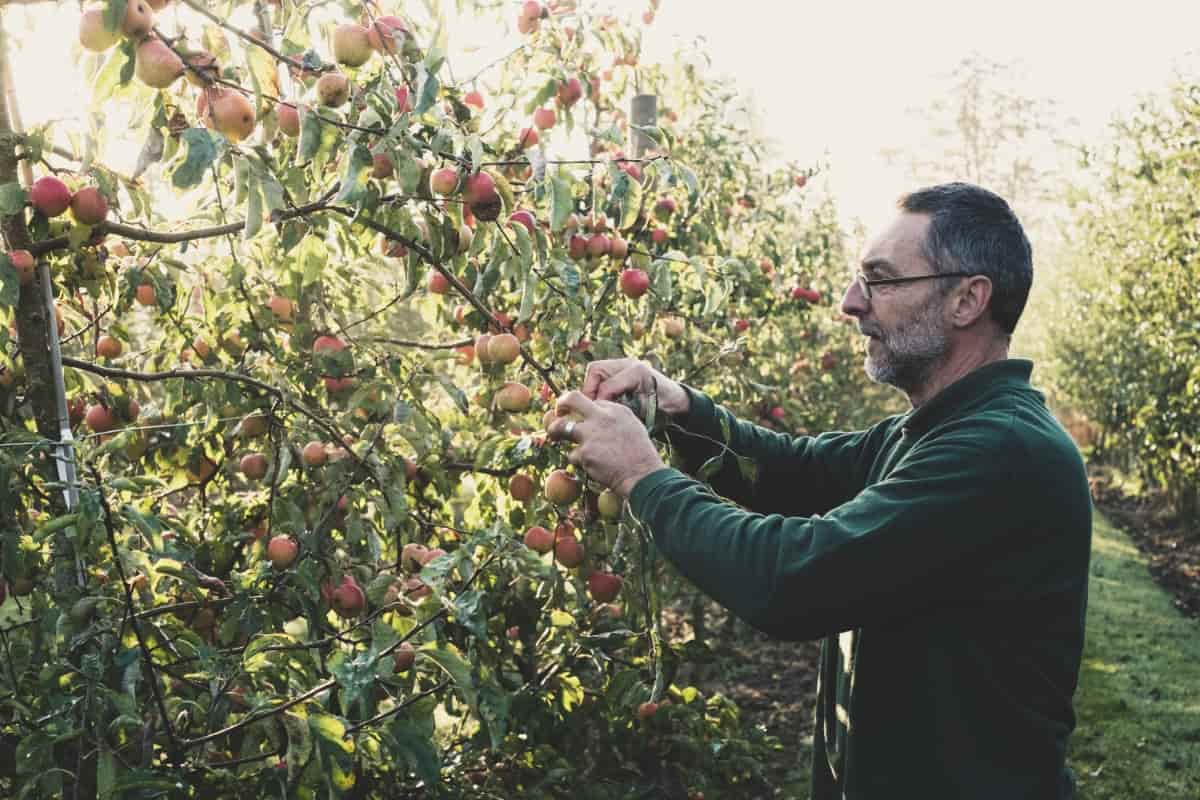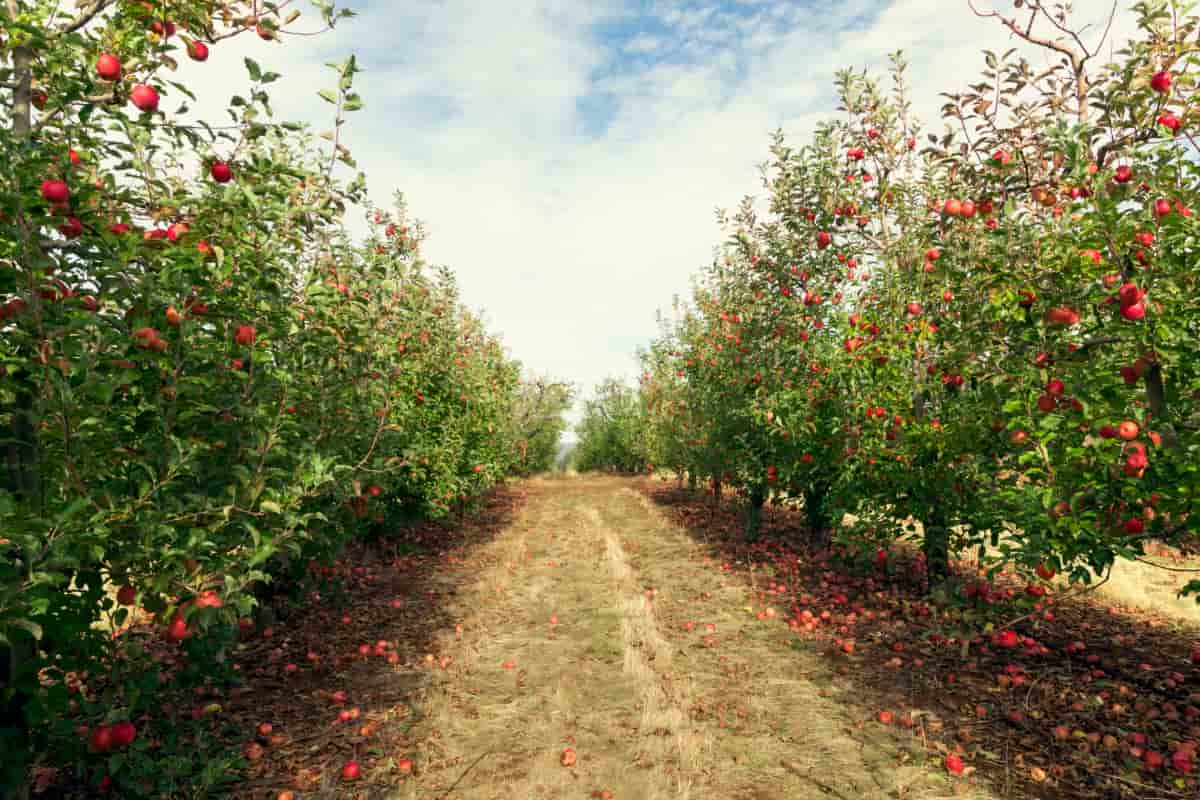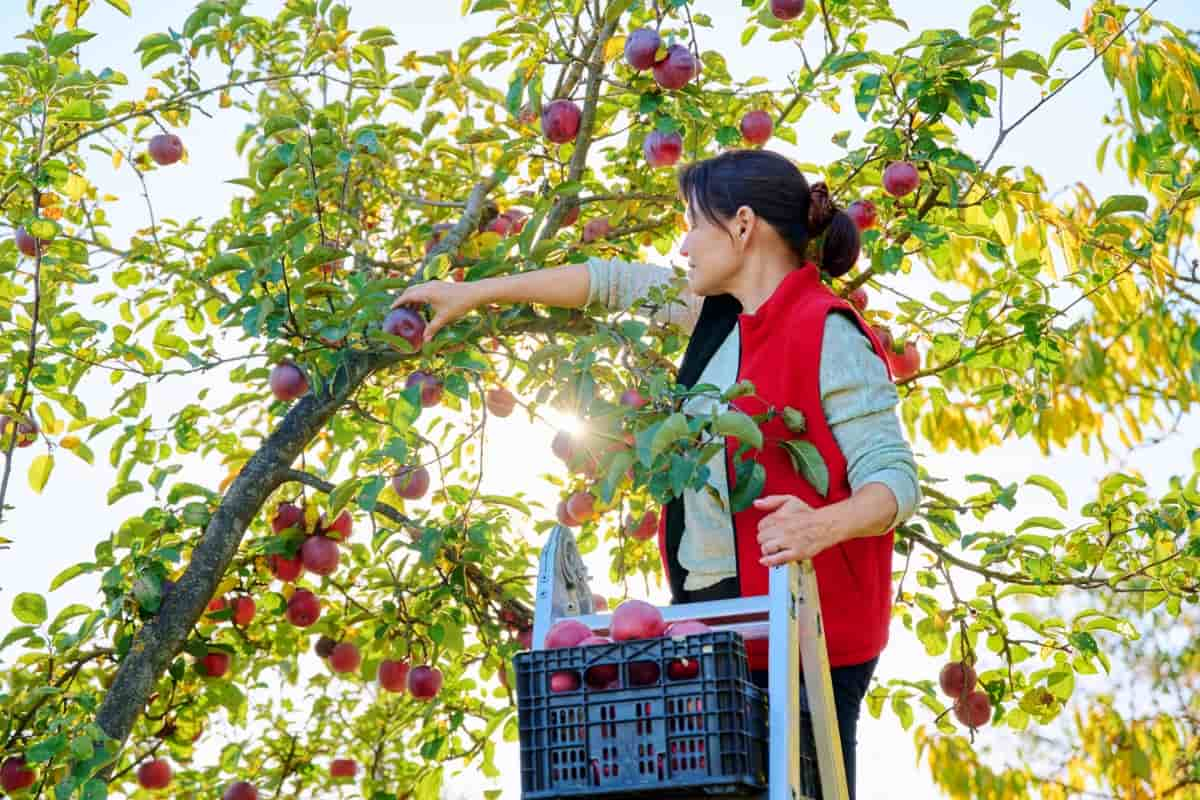A Comprehensive Project Report Guide to Production Costs and Profit AnalysisIn this comprehensive project report, we delve into the economics of cultivating apples on a one-acre plot. Our guide provides detailed insights into the production costs and offers a thorough analysis of potential profits. By examining the financial aspects of apple cultivation, this report aims to equip farmers and investors with valuable information for decision-making and maximizing returns.

1-Acre Apple Cultivation Cost and Profit
Introduction to Apple Cultivation/Farming
Introduction to Apple Cultivation/Farming, Welcome to the world of apple cultivation! This introductory guide explores the art and science of growing apples. From selecting the right apple varieties to understanding the necessary environmental conditions, we delve into the fundamental aspects of apple farming.
We also shed light on the essential cultural practices, pest and disease management, and harvesting techniques contributing to successful apple production. Whether you’re a novice farmer or an enthusiast, this guide will provide valuable insights to embark on your apple farming journey.
Market and Demand for Apple
The global fresh apple market has recently experienced significant growth, driven by the rising demand for fresh produce in emerging and developing nations. China is the largest consumer, followed by the European Union, the United States, and other countries1. The increasing demand for organic apples from the United States and European countries2 further boosted the market. Estimated at USD 99.06 billion in 2023, the market is projected to reach USD 109.37 billion by 2028, with a CAGR of 2% during the forecast period (2023-2028).
Best High-Yielding Variety for Apple Cultivation/Farming
Various high-yielding apple varieties are well-suited for farming, offering a range of options to growers. Among the popular choices are Wambugu Apple, Winter Banana, Top Red, Brae Burn, Sunehari Chaubattia, Anupam Lal Ambri, Red Gold Honeycrisp, Fuji Apple, Mollies Delicious, Golden Delicious, and Tydeman’s Early Winter Banana12. The ideal variety selection should be based on location and climate, ensuring optimal cultivation results.
Best Package and Practices for Apple Cultivation/Farming
Apple Cultivation: Climate, Varieties, Soil, Propagation, Planting, Irrigation, Pruning, Thinning, Manuring, Plant Protection, Harvesting
Climate: Although apple cultivation areas in India do not fall within the temperate zone, the prevailing temperate climate is attributed to the Himalayan ranges and high altitudes. The ideal climate for apple growth includes an average summer temperature of around 21-24°C during the active growth period. Apple trees thrive in regions where they experience uninterrupted winter rest and receive ample sunshine for color development. Suitable altitudes for cultivation range from 1500 to 2700 meters above sea level. Well-distributed rainfall of 1000-1250 mm throughout the growing season is favorable for optimal growth and fruitfulness.
Varieties: Golden Delicious (Late Season), Lal Ambri, Mollies Delicious, Starkrimson, Red June, Irish Peach, Benoni, and Tydeman’s Early. Golden Delicious (Late Season), Red Delicious (Mid-season), McIntosh.
Soil: Apple trees thrive best in well-drained loam soils with a depth of 45 cm and a pH range of 5.5-6.5. The soil should be free from hard substrata and soggy conditions. Avoid heavy clay soils or compact subsoil.
Propagation: Apples are commonly propagated through grafting and budding methods. Grafting: Whip, tongue, cleft, and root grafting are employed. Tongue and cleft grafting, conducted in February-March, yielded the best results. Budding: Shield budding is widely used, where a single bud with a shield piece of stem is inserted beneath the rind of the rootstock during active growth. Budding is performed when buds are fully formed, typically in summer.
Planting: Planting distances vary depending on the variety and soil fertility. Good pollinators should be planted to ensure effective pollination. Square and rectangular planting systems are common, with pollinators positioned at every sixth or ninth tree. In hilly areas, planting on contours helps prevent soil erosion. Based on rootstock and scion variety combinations, plant density per hectare ranges from low (less than 250 plants/ha) to ultra-high density (over 1250 plants/ha).
In case you missed it: 1-Acre Jackfruit Cultivation Cost and Profit Analysis: Project Report and Economics

Irrigation: Apple trees are sensitive to low soil moisture. Uniform rainfall distribution throughout the year is desirable, but supplementary irrigation should be provided during dry spells. Water stress can lead to poor fruit sets, heavy fruit drops, low production, and inferior quality.
Critical water requirement periods are from April to August, with peak demand after fruit set. Irrigation is typically applied immediately after manuring, every 7-10 days during summer, and at weekly intervals after fruit set. Irrigation in the fortnight before harvest enhances fruit color, followed by watering at 3-4 week intervals until dormancy onset.
Manuring and fertilization: in an apple orchard involve applying N:P: K in the ratio of 70:35:70g/year of tree age. After ten years, the stabilized dose is 700:350:700g N:P: K per tree. Farmyard manure can also be supplemented at 10kg/year of tree age. Weed control can be achieved through herbicide use or mechanical methods. Pre-harvest fruit drop can be reduced with the application of 10 PPM NAA. Effective pollination can be ensured by placing 6-8 beehives per hectare of the apple orchard.
Pruning: Pruning plays a vital role in promoting plant vigor and productivity. Weak-growing
Sorting and Grading: After harvesting, apples undergo sorting to remove unwanted fruits. The healthy fruits are washed using tap water or a dilute solution of 1 percent hydrochloric acid to remove dust and spray residue. Grading is based on size, shape, color, and permissible skin blemishes. Large, medium, small, and extra small grade fruits are packed in four layers, while extra large grade fruits are packed in three. Pittoo-grade fruits are packed with wrappers. Mechanical graders can be used for efficient grading.
Packaging: Apples are typically packaged in wooden boxes. The size of the wooden boxes varies in different apple-growing areas of India and can hold around 10kg or 20kg of fruits per box.
Storage: Apples have a longer storage life when compared to other fruits. Deterioration of the fruits starts after the climacteric stage. To prolong shelf life, optimal storage conditions are essential. The recommended storage temperature for apples is -1.1°C to 0°C, and relative humidity of 85-90% should be maintained in cold storage facilities.
Cost of Cultivation for 1-Acre Apple Cultivation/Farming
Cost of cultivation table for 1 acre of an apple orchard, with the components listed and the total cost falling within the range of $400 to $450:
Cost Components of Apple Cultivation
| Components | Cost (USD) |
| Land Rent | $50 |
| Orchard Establishment | $100 |
| Tree Saplings | $80 |
| Labor (planting, pruning) | $60 |
| Fertilizers | $50 |
| Irrigation | $30 |
| Pest and Disease Control | $40 |
| Weed Control | $20 |
| Harvesting | $20 |
| Sorting and Grading | $20 |
| Packaging | $10 |
| Storage | $10 |
| Miscellaneous Expenses | $20 |
| Total(Range) | $450-$600 |
Total Returns and Net from 1 Acre Apple Cultivation/Farming
- Selling price per kilogram: $2
- Total yield range: 5400 kg to 6000 kg
- Total Returns = Selling price per kilogram x Total yield
- Taking the lower yield range (5400 kg): Total Returns = $2/kg x 5400 kg = $10,800
- The Net returns by deducting the total cost of cultivation ($450) from the total returns:
- Net Returns = Total Returns – Total Cost of Cultivation
- Net Returns = $10,800 – $450 = $10,350
Therefore, the net returns from the 1-acre apple cultivation, considering a selling price of $2 per kilogram and a total yield range of 5400 to 6000 kilograms, would be approximately $10,350.
Challenges and Risks in Apple Cultivation/Farming
- Climate variability: Unpredictable weather patterns, including extreme temperatures, frost, and hail, can damage apple crops.
- Pests and diseases: Insect pests such as San Jose Scale and diseases like apple scab pose significant risks, requiring regular monitoring and control measures.
- Market fluctuations: Fluctuating market prices and competition can impact profitability and market demand for apples.
- Labor availability: The availability and cost of skilled labor for activities such as pruning, thinning, and harvesting can pose challenges.
- Post-harvest storage: Proper storage facilities and techniques are essential to prevent spoilage, rot, and post-harvest losses.
Quick Facts About Apple Cultivation/farming
- Apple cultivation requires a temperate climate with 21-24°C summer temperatures and 1000-1250mm rainfall.
- Popular apple varieties in India include Golden Delicious, Red Delicious, McIntosh, and more. Apples are planted in loamy soil pits with organic matter, requiring regular irrigation during critical periods.
- Pruning techniques vary based on cultivar characteristics.
- Common pests include San Jose Scale, apple scabs, and diseases like collar rot.
- Sorting and grading are based on size, shape, and color, while optimal storage conditions are -1.1°C to 0°C with 85-90% humidity.
In case you missed it: 1-Acre Amla Cultivation Project Report: A Comprehensive Guide to the Production Cost and Profit

Conclusion
1-Acre apple cultivation requires careful planning and investment. This comprehensive project report provides valuable insights into the production costs and profit analysis of apple farming. By considering factors such as land preparation, irrigation, fertilization, pest control, and market dynamics, farmers can make informed decisions to maximize profitability.
- Feed Your Flock for Less: Top 10 Tips to Save on Chicken Feed
- Ultimate Guide to Ossabaw Island Hog: Breeding, Raising, Diet, and Care
- Hatching Answers: The Top 10 Reasons Your Chickens Aren’t Laying Eggs
- Eggs and Economics: Breaking Down the Cost of Raising Backyard Chickens
- Defend Your Greens: Proven Methods to Keep Iguanas Out of Your Garden
- Ultimate Guide to Cinnamon Queen Chicken: A Comprehensive Guide for Beginners
- Ultimate Guide to California Tan Chicken: Breeding, Raising, Diet, Egg-Production and Care
- Ultimate Guide to Marsh Daisy Chicken: Breeding, Raising, Diet, and Care
- 10 Types of Chicken Farming Businesses You Can Start for Profits